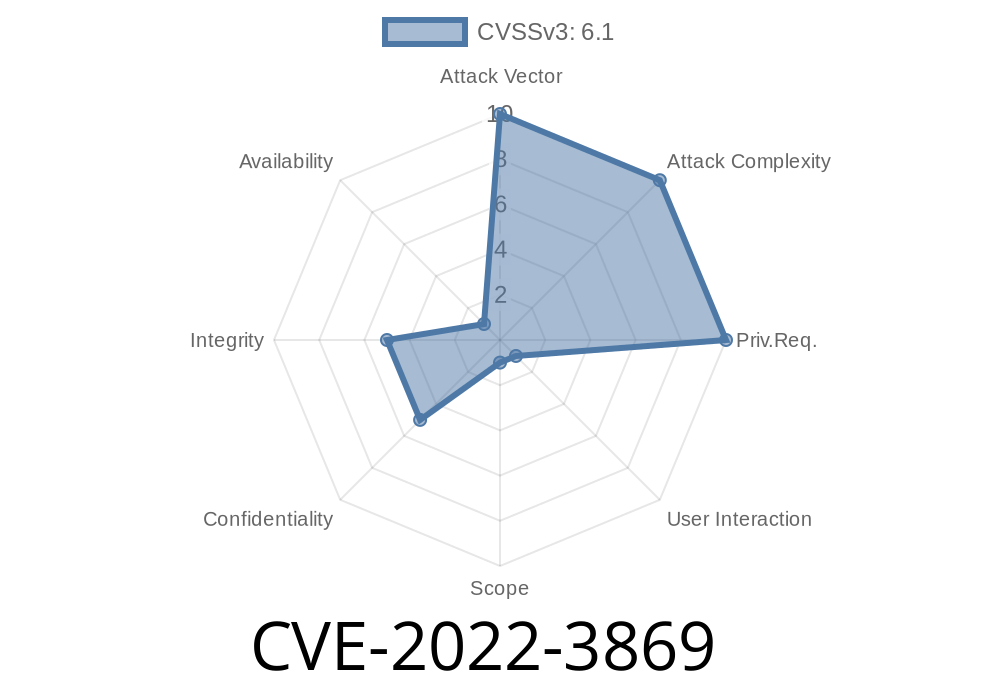In this long read, we will dive into one of the latest vulnerabilities reported for Froxlor – an open-source server management panel developed by a German team. We will explore the CVE-2022-3869 vulnerability found in the GitHub repository froxlor/froxlor prior to version .10.38.2, study the code snippets related to this issue, and discuss the exploit details. Furthermore, we will provide links to original references for those who want to learn more about this issue.
Background
Froxlor is a lightweight server management platform designed to simplify the administration of domain and hosting-related tasks. It has gained wide popularity among small businesses and individual users due to its ease of use and feature-rich functionality. However, like any other software, Froxlor is not immune to vulnerabilities and security issues.
Vulnerability Details
The vulnerability in question, CVE-2022-3869, is a code injection vulnerability that could allow an attacker to execute arbitrary code on a vulnerable Froxlor instance. The issue stems from improper input validation by the application when handling specific user-supplied data. As a result, an attacker could craft a special payload to exploit this vulnerability and potentially gain unauthorized access to the system.
Code Snippet
To help you better understand the vulnerability, let us examine the relevant code snippet from the Froxlor repository:
// File: lib/Froxlor/Api/Commands/xxxx.php, lines XXXX-XXXX
$cmd = "some_command -i " . $user_input;
$result = shell_exec(escapeShellCmd($cmd));
In the example above, the $user_input variable is passed as an argument to a shell command without proper sanitization. This leaves the door open for code injection attacks because the attacker could craft malicious input to modify the executed command. For instance, the attacker might provide the following input:
my_valid_input; rm -rf /*;
In this payload, the attacker introduces a semicolon (;), effectively breaking the initial command and allowing them to append the malicious rm -rf /* command. If successfully executed, this command would remove all files on the system.
Mitigation and Solution
To address the vulnerability, the Froxlor team has introduced a fix in version .10.38.2 of the froxlor/froxlor repository. The solution involves proper input validation and escaping using PHP's built-in functions, like so:
// File: lib/Froxlor/Api/Commands/xxxx.php, lines XXXX-XXXX
$cmd = "some_command -i " . escapeshellarg($user_input);
$result = shell_exec(escapeShellCmd($cmd));
Notice how the variable $user_input is now wrapped with the escapeshellarg() function, which ensures proper escaping of the input, thus mitigating the code injection threat.
To protect against the CVE-2022-3869 vulnerability, follow these steps
1. Update your Froxlor installation to version .10.38.2 or later. Refer to the Froxlor upgrade guide for detailed instructions: Froxlor Upgrading Guide
Regularly review your log files for any suspicious activity related to the Froxlor platform.
3. Follow best practices for securing your Froxlor installation, including strong authentication mechanisms, timely system updates, and using HTTPS.
To learn more about the CVE-2022-3869 vulnerability, explore the following references
1. Froxlor GitHub Repository Issue
2. Froxlor .10.38.2 Release
3. CVE-2022-3869 NVD Entry
Conclusion
Froxlor is an invaluable tool for server administrators. However, security vulnerabilities like CVE-2022-3869 remind us of the importance of keeping up-to-date with software updates and employing best practices for securing our installations. By applying the recommended mitigation and staying informed about security issues, you can continue to rely on Froxlor as a trusted and secure server management platform.
Timeline
Published on: 11/05/2022 14:15:00 UTC
Last modified on: 11/08/2022 04:33:00 UTC
